- Home
- Robert Jordan
The Wheel of Time Companion Page 13
The Wheel of Time Companion Read online
Page 13
Avharin, Einion. One of the three most famous First Counsels in Far Madding history. A statue of her stood in Avharin Market in Far Madding, pointing to the Caemlyn Gate.
Avharin Market. One of three markets in Far Madding where foreigners were allowed to trade.
Avi Shendar. A man in Marcedin who kept pigeons. His bread was buttered on at least two sides. He sent reports out for Ronde Macura, one northeast toward Tar Valon, and another one west for her, to an unknown recipient. He also copied the same message to yet another destination, in a different direction from the other messages.
Aviellin. A Maiden who was badly wounded at Malden while helping take out the sentries northwest of Malden so the carts could get through. She was Healed by Janina, and participated in the battle at Malden.
Aviendha. A woman of the Nine Valleys sept of the Taardad Aiel, born in 980 NE. She was Far Dareis Mai until she began training to be a Wise One. She could channel, and her strength level was 11(2). Aviendha was about 5'9" tall with blue-green (or green, according to various folk) eyes and reddish hair which was cut short as a Maiden, but she let it grow after being apprenticed to the Wise Ones. Her wards against eavesdropping were better than Aes Sedai’s. She had the ability to unweave and the rare abilities to read residues and to tell what a previously unseen weave would do before it coalesced. She displayed an ability to tell what a ter’angreal could do, though she could not make one, and showed great ability at defending against attacks, too; some at shielding, but more in blocking thrusts, so to speak. She had no feel for Healing. She could divide her flows more than Elayne, perhaps as much as Nynaeve.
Aviendha was one of the Aiel sent to the wetlands to search for He Who Comes With the Dawn. When Dailin, one of her companions, was injured, Aviendha approached Nynaeve, Elayne and Egwene for help. Nynaeve Healed Dailin, and afterward Aviendha followed the women, saw them captured and brought other Aiel to rescue them. Aviendha went to the Stone, and became friends with the women.
She was then summoned to the Waste to become an apprentice to the Wise Ones; she traveled there with Rand and his group via Portal Stone, and immediately went to Rhuidean. Inside the ter’angreal at Rhuidean she saw herself fated to fall in love with Rand, and she was unwittingly part of a Wise One plan to tie Rand to the Aiel by giving him an Aiel wife. Aviendha objected to the plan—she had promised to watch Rand for Elayne and did not want to fall in love with him. She nonetheless became his teacher, since the Wise Ones ordered it. In thanks, Rand gave Aviendha a bracelet. In return, she gave him Laman’s sword; he kept the blade, but returned the jeweled hilt. When Rand walked in on her naked, Aviendha fled, making a gateway to Seanchan. Rand followed, saved her from drowning and made her a shelter in a snowstorm. When she awoke, they made love. Rand announced his intention of marrying her, but she declined. On the way back to the gateway, they encountered Seanchan with sul’dam and damane, but escaped.
Aviendha participated in the battle against the Shaido for Cairhien. She accompanied Rand and Egwene to the docks, where Lanfear attacked them. Aviendha was not as severely injured as Egwene, and went to Caemlyn with Rand after news came that Rahvin had killed Morgase. There she was struck by lightning and killed, but when Rand smote Rahvin with balefire, she was brought back to life. Rand sent Mat to Salidar to bring Elayne to Caemlyn, and Aviendha went as well. Aviendha accompanied Nynaeve, Elayne and Mat to Ebou Dar. There she met with the Sea Folk and watched Carridin. She made a gateway to the Kin’s farm, and then terrified the Aes Sedai by unweaving it.
Aviendha was part of the circle that used the Bowl of the Winds. When the Seanchan came near, Elayne made a gateway to Andor and then tried to unweave it; she was not trained as Aviendha had been, and it exploded, injuring her, Aviendha and Birgitte and killing many Seanchan. Aviendha was Healed by Nynaeve and accompanied Elayne to Caemlyn, where they became first-sisters. Aviendha resumed her Wise One training in Caemlyn. She stayed with Elayne, helping her in many ways such as identifying the functions of ter’angreal discovered in Ebou Dar, until the Aiel left for Bandar Eban and the Wise Ones told her she must go too. After worrying that she was being punished, she realized that she had to declare herself a Wise One; she did, and went to Rhuidean. She passed through the crystal columns twice. The first time she saw the history of the Aiel, and the second time she saw a desolate future. She returned to the Wise Ones, and then met with Rand. She told him that he must accept her, Elayne and Min or he would have none. She asked for a boon—that the Aiel be included in Rand’s peace.
At Shayol Ghul in the Last Battle she fought as the commander of all the channelers there. In a struggle with Graendal/Hessalam, she was badly injured and at Graendal’s mercy. Just as Graendal was about to Compel her, she unwove a gateway, which caused the Compulsion to affect Graendal instead. Graendal, enthralled by Aviendha, carried her back to camp, where she was Healed as far as was possible. She later gave birth to Rand’s quadruplets.
Avin, Master. A gate guard in Baerlon, Andor, who let Moiraine and her party into Baerlon. He had a wizened face and was half toothless.
Avin, Rhea. See Rhea Avin
Avriny, Elaida do a’Roihan. See Elaida do Avriny a’Roihan
Awlsten. An Asha’man who was with Ituralde in Maradon and at Shayol Ghul. Atop the pass leading into Thakan’dar, he signaled the Aiel to roll boulders and burning logs down on to the Shadowspawn.
Ayako Norsoni. An Arafellin Aes Sedai of the White Ajah and the loyalist contingent, with a strength level of 18(6). She was about 5'2" tall, with wavy, waist-length black hair and dark eyes that seemed almost black when she was concentrating. Ayako was brown-skinned, although not as dark as a Domani. She prided herself on her logic, but she was not a particularly cool-appearing woman, rather being on the merry side, with a twinkle in her eyes, although she seemed shy, a rarity among Aes Sedai. Ayako was part of the Black Tower expedition under Toveine Gazal and was captured by the Asha’man and bonded by Donalo Sandomere. She was the only White in the expedition. Ayako took part in beating Toveine and it disturbed her that she had. It was irrational, or so she tried to tell herself, but it felt so right. She and Donalo were Turned to the Shadow and captured in Stedding Sholoon by Androl and his allies, including some elderly Ogier.
Aybara clan. A Two Rivers Family. See Adora, Carlin, Con, Deselle, Ealsin, Eward, Jaim, Joslyn, Magde, Neain and Paetram Aybara
Aybara, Perrin. See Perrin t’Bashere Aybara
Aydaer. A Two Rivers family. See Jared and Pel Aydaer
Ayellin clan. A family in the Two Rivers. See Corin, Dav, Jon, Lara, Larine, Marisa, Milli, Neysa and Sari Ayellin.
Ayellin, Mistress. A Two Rivers woman whom Nynaeve treated for fever.
Aylar, Malena. See Malena Aylar
Ayliah, Get. See Get Ayliah
Aynal, Widow. The annual sheep shearing in Emond’s Field took place in a space called “Widow Aynal’s meadow,” even though no one remembered who she was.
Aynora, Mistress. A woman in a song who has a rooster. At least one version of the song was actually about a rooster.
Ayyad, the. Channelers in Shara. They lived in villages cut off from the outside world, surrounded by high walls that obscured vision in every direction; no one except the Ayyad were allowed to enter and any non-Ayyad who managed to enter was killed on sight. Supposedly no Ayyad left without permission. The source of this permission was somewhat vague, but since it was widely known that no Ayyad would channel without instructions from or the permission of the currently ruling Sh’boan or Sh’botay, it was believed by all that any Ayyad who was outside the villages had such permission. The Ayyad were tattooed on their faces at birth. The only exception to this was someone who was discovered to be able to channel later in life. They were presumed to be the result of a union between one of their ancestors and an Ayyad; they were seized, tattooed and confined to an Ayyad village for the rest of their lives. Sexual congress between Ayyad and non-Ayyad was punishable by death for the non-Ayyad, and for the Ayyad as well if it c
ould be proven the Ayyad forced the other. Any child of such a union was killed by exposure to the elements. It was only female Ayyad who ever left the villages, with two exceptions.
Male Ayyad were kept completely cloistered and were not educated in much of anything beyond the ability to feed and dress themselves and do simple chores; they certainly never learned to read or write. Male Ayyad were considered breeding stock only, by female Ayyad; in truth, the records the Ayyad kept of bloodlines were akin to the records of horse-breeders. Sons were raised communally, rather than by their mothers, as daughters were. In fact, sons were never referred to as sons among the Ayyad; they were only referred to as “the male.”
The first exception to a male Ayyad being confined to the villages occurred when he reached about sixteen. At that point he would be hooded and transported inside a closed wagon to a distant village, thus never seeing anything outside the villages. There he was matched with one or more women who wished children. In his twenty-first year—or sooner if he showed signs of beginning to channel—the Ayyad male was once more hooded and taken away, believing that he was on his way to another village. Instead he was killed and the body cremated.
Most Sh’boan and Sh’botay lived through their seven-year reigns and died thereafter believing that it was “the Will of the Pattern,” but in truth the Ayyad killed the ruling Sh’boan or Sh’botay. The ruler was always surrounded by Ayyad women as servants, and the only way to approach the ruler, especially for a favor or ruling, was through these women, and the reply was usually delivered by them, as speech with the Sh’boan or Sh’botay was a very great honor. Some rulers failed to live the full seven years—such early death always taken as a sign of the Creator’s displeasure, resulting in penances served across the land by high and low—and it should be taken as a certainty that these men and women had discovered the truth, perhaps of why their reigns would last only seven years, perhaps of the fact that while they in fact wielded great power, the true control of the land was in the hands of the Ayyad, through the women surrounding the ruler.
Azereos, Master. An Illianer trader in Far Madding with a white beard and pointed nose. Rand eavesdropped on him at an inn called The Golden Wheel, while a Far Madding trader advised him not to move his trade to Lugard.
Azeri, Yurith. See Yurith Azeri
Azi al’Thone. A Two Rivers man in Perrin’s army. He sometimes acted as Perrin’s bodyguard and was with him at his Whitecloak trial. Azi was present when Perrin forged Mah’alleinir. He fought in the Last Battle, showing great skill with his bow.
Azil Mareed. The Domani High Captain of the Tower Guard and advisor to Marya Sedai on the decision-making council of the Grand Alliance during the Battle of the Shining Walls.
Azille Narof. An Aes Sedai who lived at the time of the formation of the White Tower.
Azril. A serving girl at an inn called Culain’s Hound, in Caemlyn. On Verin’s instructions, she took tea laced with brandy to the young women from the Two Rivers when they were frightened by Rand, after he was bonded by Alanna.
Azzara din Karak. A Sea Folk Windfinder with a strength level of 18(6). She accompanied Renaile to the Tarasin Palace, and then to the Kin’s farm. Because she was one of the strongest available among the remaining Windfinders in Ebou Dar, she observed the use of the Bowl of the Winds, then fled to Caemlyn with Elayne and her companions when the Seanchan attack was discovered.
Azzedin, Edesina. See Edesina Azzedin
B
Ba’alzamon. An ancient name meaning “Heart of the Dark.” See Ishamael and Moridin
Bael. A man of the Jhirad sept of the Goshien Aiel and the Sovin Nai society, and the clan chief of the Goshien. He was married to Dorindha, with whom he had three children, and to Melaine, with whom he was expecting twins. He was about 6'10" tall and approximately 275 pounds, with a long face, gray-streaked red hair and blue-gray eyes. Bael had a habit of fingering his earlobe when he thought. He went to Caemlyn with Rand. There he was in charge, along with Davram Bashere, until after Elayne arrived; his Aiel and Bashere’s Saldaeans policed the city and surrounding countryside. Rand sent him and the Goshien to Bandar Eban to try to restore order. In the Last Battle, Bael was with Elayne and her army.
Baelome, Lady. A Ghealdanin noblewoman ordered flogged by the Prophet for speaking of “this Rand al’Thor.” She was the most powerful member of the Crown High Council in Ghealdan.
Baerin. An Aiel woman whose daughter was a Wise One’s apprentice. Baerin took part in a discussion in the Wise Ones’ tent involving how to deal with the Car’a’carn. She was a Maiden of the Spear before she married and had children.
Baelder. An Aiel Red Shield who fought with Rhuarc in the Last Battle.
Baerlon. A town in Andor with a wooden palisade, north of the Two Rivers. It was on the road from the mines in the Mountains of Mist to Whitebridge and thence to Caemlyn. Merchants stopped at Baerlon on their way into the Two Rivers to buy tabac and wool. It had a Town Watch and a Whitebridge Gate. Proximity to the mines in the Mountain of Mist was an economic boon to the town, as its iron smelting plants processed the ore.
Bagand, Sereille. See Sereille Bagand
Baijan’m’hael. Old Tongue for “Attack Leader.” It was a rank assigned to Manel Rochaid by Taim; it indicated that he was second to Gedwyn, the Tsorovan’m’hael.
Bailene. A feast celebrated on the ninth day of Amadaine in Arad Doman, Tarabon, Amadicia and Tear.
Baily, Martna. A fictional pie maker in Hinderstap.
Bain. A Maiden of the Spear of the Black Rock sept of the Shaarad Aiel, born in 981 NE. She was 5'8½" tall, with flame-colored hair and dark blue eyes. Although they were from clans with a blood feud, she adopted Chiad as her first-sister; neither would let a man come to her without the other. Bain went to the Stone of Tear. She and Chiad became friends with Faile, and accompanied Faile to the Two Rivers. Bain went to Caemlyn, Cairhien and Ghealdan with Perrin. She was taken gai’shain by Sevanna and the Jumai Shaido when Faile’s riding party was captured. After Sevanna was taken by the Seanchan, Bain became gai’shain to Gaul, who was in love with Chiad but did not like Bain. During the Last Battle, Bain and Chiad helped in the Healing facility set up at Berelain’s palace in Mayene, and began collecting the wounded from the battlefields.
Bain, Old. A farmer in Andor from whom Alpert Mull bought hay.
Bair. A Wise One of the Haido sept of the Shaarad Aiel. She was a dreamwalker but she could not channel. She was the eldest Wise One of the Shaarad, in her late nineties or more; she had a creased grandmotherly face, white hair and pale blue eyes. Bair spoke with a reedy but strong voice. She was a bony woman, with angular shoulders. Bair outlived three husbands. While Amys and Melaine were the best at interpreting the dream, Bair was better at manipulating Tel’aran’rhiod. After Aviendha reported her visions of the future in Rhuidean, Bair went to the city and entered the ter’angreal a second time and saw similar visions. Bair survived the Last Battle to attend Rand’s funeral.
Bajad drovja. A curse in the Old Tongue uttered by Sammael.
Bakayar Mishima. A Seanchan captain under Banner-General Tylee Khirgan. He had yellow hair and several scars on his square face, and one scar met the corner of his mouth, distorting his smile. Mishima was a hard-bitten man who to Perrin smelled strangely of amusement. He led the Seanchan who dumped forkroot into the aqueduct at Malden, and fought in the battle against the Shaido there. On the way back to Ebou Dar, they were attacked by Trollocs, and he was killed by an arrow in the throat.
Bakh. A soldier in Lan’s army at Tarwin’s Gap. He always had a crossbow tied to the back of his horse, despite Lan’s warning that it might go off accidentally. His sword got caught in a Trolloc’s armor, but before he died, he killed one Trolloc with a crossbow shot to the eye and killed another with his boot knife.
Bakuun, Assid. See Assid Bakuun
Bakuvun, Hafeen. See Hafeen Bakuvun
Balasun. A nation that arose after the Trolloc Wars.
Balat. A Domani s
word-swallower and fire-eater with Luca’s show. His brother was Abar.
Baldene, Covarla. See Covarla Baldene
Baldhere, Lord. The Swordbearer to the Throne of the Clouds for Queen Ethenielle of Kandor. He carried what was said to be the Sword of Kirukan cradled in one arm, the hilt always toward the ruler, while conducting official business. In addition, he wore a sword at his hip, a longer, two-handed sword in a saddle-scabbard behind his saddle, and carried a mace held on his saddle by a cord. He was slender with white streaks at his temples. Baldhere was gay. He was known for a sharp tongue and a biting wit, and often spoke or behaved in a fussy manner. Regardless, he could bellow when needed, as when shouting orders to troops. He affected to be more concerned with music and clothes than anything else. Baldhere commanded the armies of Kandor in the field for Ethenielle after the death of her husband in 979 NE. Most Kandori soldiers would have followed him to Shayol Ghul. Baldhere was a very good general, but not one of the great captains. He was troubled by Agelmar’s decisions during the Last Battle, and took those concerns to Lan, leading to Agelmar being relieved of command.
balefire. An extreme weapon of channelers. It burned anything it touched into nonexistence and also burned threads from the Pattern, an effect which could destroy past realities. People who were balefired could not be brought back by the Dark One; however, their souls were not destroyed, and they could be spun out by the Wheel at a later time.
Wiping a person out of the Pattern did not remove memories of the person, but the Pattern readjusted itself so far as the physical world was concerned; nothing done by that person during that blanked time actually occurred. People remembered these things as before, but they had not happened—now. And along with that, all the ripples from the person’s actions were remembered as having happened, but they never did. People could remember doing things that they did not do. The dead didn’t come back to life, but people found that their memories of that time were completely false, that they remembered doing things themselves that apparently had never happened. The strain on the fabric of the Pattern from major uses was so great that even those supporting the Shadow were reluctant to use balefire for fear they might destroy everything, although the Dark One encouraged the use of balefire as events approached the Last Battle.

 Conan the Unconquered
Conan the Unconquered Conan the Triumphant
Conan the Triumphant The Eye of the World
The Eye of the World The Great Hunt
The Great Hunt Conan the Victorious
Conan the Victorious The Dragon Reborn
The Dragon Reborn The Fires of Heaven
The Fires of Heaven Winter's Heart
Winter's Heart Lord of Chaos
Lord of Chaos The Shadow Rising
The Shadow Rising Conan the Defender
Conan the Defender The Strike at Shayol Ghul
The Strike at Shayol Ghul The Path of Daggers
The Path of Daggers A Memory of Light
A Memory of Light Knife of Dreams
Knife of Dreams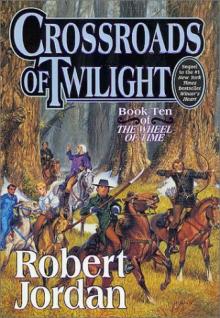 Crossroads of Twilight
Crossroads of Twilight Conan the Invincible
Conan the Invincible The Gathering Storm
The Gathering Storm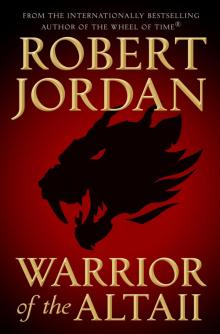 Warrior of the Altaii
Warrior of the Altaii A Crown of Swords
A Crown of Swords The Wheel of Time
The Wheel of Time Towers of Midnight
Towers of Midnight Conan Chronicles 2
Conan Chronicles 2 Conan the Magnificent
Conan the Magnificent New Spring
New Spring What the Storm Means
What the Storm Means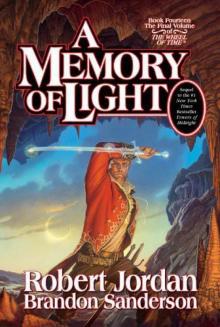 A Memory of Light twot-14
A Memory of Light twot-14 New Spring: The Novel
New Spring: The Novel Towers of midnight wot-13
Towers of midnight wot-13 A Memory Of Light: Wheel of Time Book 14
A Memory Of Light: Wheel of Time Book 14 A Crown of Swords twot-7
A Crown of Swords twot-7 Lord of Chaos twot-6
Lord of Chaos twot-6 The Great Hunt twot-2
The Great Hunt twot-2 The Shadow Rising twot-4
The Shadow Rising twot-4![Wheel of Time-11] Knife of Dreams Read online](http://i1.bookreadfree.com/i1/04/03/wheel_of_time-11_knife_of_dreams_preview.jpg) Wheel of Time-11] Knife of Dreams
Wheel of Time-11] Knife of Dreams The Dragon Reborn twot-3
The Dragon Reborn twot-3 The Wheel of Time Companion
The Wheel of Time Companion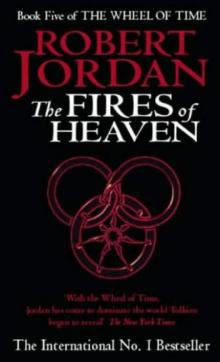 The Fires of Heaven twot-5
The Fires of Heaven twot-5 Prologue to Towers of Midnight
Prologue to Towers of Midnight The Path of Daggers - The Wheel of Time Book 8
The Path of Daggers - The Wheel of Time Book 8 The Path of Daggers twot-8
The Path of Daggers twot-8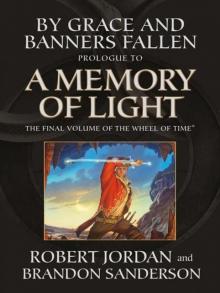 By Grace and Banners Fallen: Prologue to a Memory of Light
By Grace and Banners Fallen: Prologue to a Memory of Light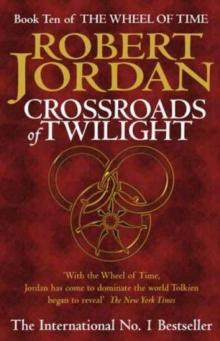 Crossroads of Twilight twot-10
Crossroads of Twilight twot-10 The Gathering Storm twot-12
The Gathering Storm twot-12 Winter's Heart twot-9
Winter's Heart twot-9 Knife of Dreams twot-11
Knife of Dreams twot-11 New Spring: The Novel (wheel of time)
New Spring: The Novel (wheel of time)